Rats in Toilet Bowls: Health and Environmental Concerns
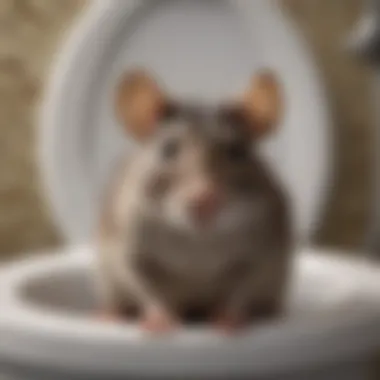
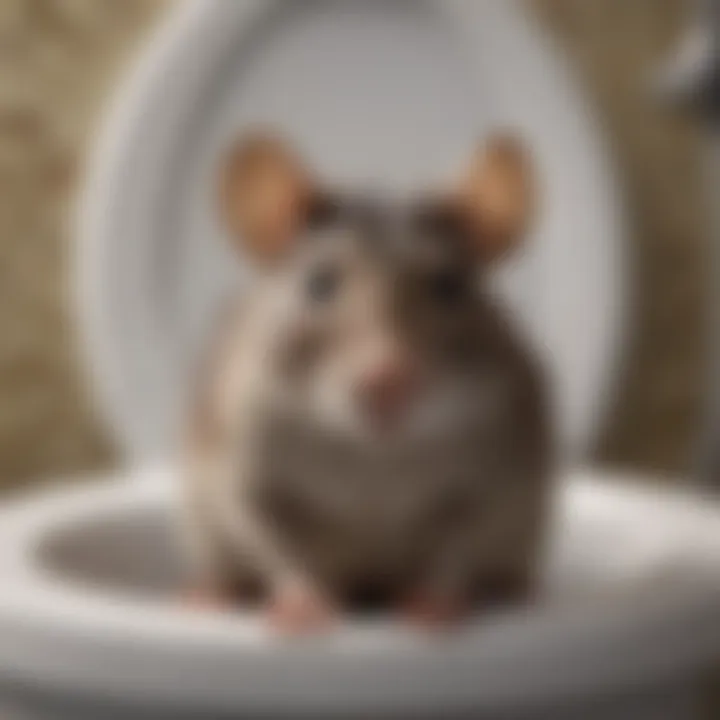
Preventive Pest Control Strategies
Taking preemptive steps is an effective way to keep your home pest-free, and for many, it's like putting on rain boots before facing the storm. Here's how to safeguard your spaces, particularly against the unsettling presence of rats.
House Exterior Protection
The first line of defense is your home’s outer shell. Think of it as the armor that keeps unwanted invaders out. Here are some useful tips:
- Sealing Cracks: Examine the exterior of your home for cracks and crevices. Even tiny holes can invite pests. Use caulk or expanding foam to fill these gaps, especially around windows, doors, and utility lines.
- Clearing Debris: Keep the area around your home tidy. Piles of leaves or branches can create cozy nesting spots for rodents. Regularly rake leaves and dispose of any debris that accumulates.
- Preventing Entry: Install door sweeps and repair torn screens. Ensuring your windows are screened will reduce the chances of pests slipping in unnoticed.
Yard Maintenance
An organized yard is key to keeping pests at bay. A little care goes a long way:
- Essential Yard Care Routines: Regularly mow the lawn and trim overgrown shrubs. This discourages pests from finding hiding spots outside your home.
- Methods for Keeping Yard Pest-Free: Utilize mulch wisely; it’s great for gardens but can attract pests if excessively piled up. Consider using pest-resistant plants, which can be both lovely and functional.
Indoor Cleanliness
What goes on inside your home is just as important. A clean space not only feels inviting but also reduces pest attraction:
- Expert Cleaning Tips: Regularly vacuum and wipe down surfaces. Pay special attention to nooks and crannies where crumbs might hide.
- Maintaining a Pest-Resistant Indoor Environment: Store food in sealed containers and avoid leaving pet food out for long. Both strategies help ensure that unwanted guests don't find a feast in your home.
Garbage Disposal
Your waste management habits shouldn’t be left to chance:
- Efficient Waste Disposal Methods: Ensure your garbage cans have tight-fitting lids. This minimizes the scent that can lure rodents closer.
- Importance of Proper Garbage Disposal: Regularly take out trash and clean bins to prevent buildup of smells that attract pests; treating garbage cans with vinegar can even help reduce odors.
Other Pest Prevention Strategies
There are countless ways to keep those pests at bay, and some are downright inventive:
- Innovative Ways to Safeguard Your Home: Use barriers like metal sheeting around your foundation to deter rodents from burrowing. Installing motion-sensor lights can also scare off nocturnal critters that don’t want the spotlight.
"An ounce of prevention is worth a pound of cure."
Preparation is the name of the game when it comes to pest control. By taking these preventive measures, you equip yourself with the knowledge and tools needed to maintain a pest-free living environment. Tackling potential problems at their roots lays the groundwork for a healthier and more comfortable home.
Prelims to Rats in Toilet Bowls
The sight of a rodent lurking in a toilet bowl is enough to send shivers down the spine of any homeowner. This unsettling reality is not just a horror story reserved for the pages of a novel—it’s a phenomenon that calls for serious discussion. Understanding how rats invade our bathrooms is paramount for several reasons. First and foremost, it highlights the health risks associated with such encounters. These creatures carry diseases that can be transmitted to humans, making knowledge about their behaviors and habitats essential for public health.
Beyond health, there’s also the psychological aspect. For many, the very idea of a rat in their toilet can spark anxiety. This fear is not unwarranted, as it reflects deeper concerns about sanitation and safety in one's own home. Moreover, the presence of rodents can create a sense of unease, leading to constant vigilance and even lifestyle changes. Homeowners might find themselves reconsidering where they store food, how they maintain plumbing, and their overall approach to hygiene.
In addition to health and psychological concerns, it’s crucial to debunk certain common misconceptions surrounding this issue. Many individuals believe that such occurrences are isolated incidents, that they wouldn’t happen in clean homes, or that the problem is purely aesthetic. In reality, factors like urbanization and flawed plumbing systems play a critical role in infestations. By shedding light on these realities, homeowners can take proactive steps to protect their living spaces.
Awareness is the first step in tackling the problem. Through understanding the routes of entry, biological characteristics, and the broader implications of rodent presence in urban settings, individuals can fortify their homes against these unwelcome guests. So let’s dive deeper into this pressing matter, starting with the psychological impact.
Biological Characteristics of Rats
Understanding the biological characteristics of rats provides critical insight into their presence in toilets and other urban areas. Knowledge of their anatomy and behavioral adaptations equips homeowners with the tools to anticipate, identify, and manage potential infestations. This section highlights the significance of two key species—Norway rat and Roof rat—as well as crucial behavioral adaptations that make them adept at navigating urban plumbing and environments.
Species Overview
Norway Rat
The Norway rat, often called the brown rat, is a robust creature that typically grows between 7 to 9 inches long, not counting the tail. One prominent aspect of the Norway rat is its ability to thrive in various environments, including sewers and basements, which makes it a potential threat to households. Its key characteristic is its strong burrowing capability—able to dig through earth and even various building materials. This adaptability allows them to create nests and establish territories close to human dwellings.
The unique feature of the Norway rat is its infamous agility and strong swimming skills, enabling it to travel through sewer systems effectively. The disadvantages, however, include their tendency to form large colonies, which leads to heightened concerns about hygiene and health, especially in household contexts where their droppings might contaminate water sources or food supplies.
Roof Rat
The Roof rat, also known as the black rat, is slightly smaller than its Norway counterpart, generally measuring around 6 to 8 inches in length. Its specific aspect is its preference for higher elevations, making it commonly found in attics and rooftops of buildings. This adaptability permits it to travel across urban landscapes with a surprising degree of ease.
A significant key characteristic of the Roof rat is its incredible climbing ability. This makes it a relevant concern for homeowners with plumbing that might be interconnected to higher points of a structure. Its unique feature lies in its slender body shape, which allows it to access smaller openings in search of food and shelter. However, one disadvantage includes their reactivity to changes in their environments, making them harder to trap once disturbed.
Behavioral Adaptations
Swimming Capability
A notable adaptation of rats is their swimming capability. Both the Norway rat and Roof rat are proficient swimmers, often able to hold their breath for several minutes while navigating through water. This adaptation is particularly significant in urban areas where sewer systems can overflow, causing water to rise in homes.
Their key characteristic related to this ability is their strong, muscular limbs which allow them to paddle effectively. This benefits the rats by providing alternative routes when faced with obstacles. However, one danger for homeowners to consider is that these swimming skills enable rats to seamlessly find their way into toilet bowls and other plumbing fixtures, leading to hygienic concerns.
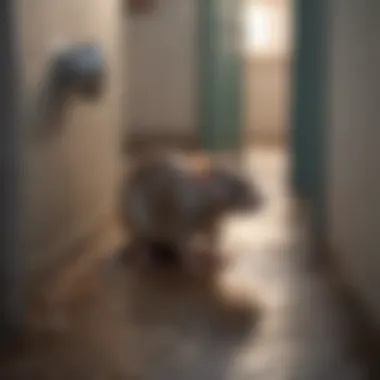

Escaping Constraints
Rats are known for their remarkable ability to escape constraints, a behavior that finds its roots in their evolutionary history. They can squeeze through openings as small as half an inch, allowing them to slip into spaces that may seem tightly sealed to humans. This behavioral adaptation is a key factor in their resilience against typical control methods.
This unique feature is particularly worrisome for homeowners. The ability of rats to escape traps or confinement underscores the need for thorough preventive measures. Addressing any potential access points in your home is crucial, as neglecting this can lead to quick reinfestation after control efforts.
Routes of Entry: How Rats Access Toilets
Understanding how rats make their way into toilets is crucial when considering the broader implications of rat infestations in urban settings. The routes of entry not only reveal the vulnerabilities in plumbing and building structures but also highlight effective prevention strategies. Knowing the pathways by which these rodents intrude can be a significant advantage for homeowners striving to maintain a clean and safe environment. This section will delve into the primary avenues rats exploit, focusing on plumbing systems and structural weaknesses that facilitate their unsettling presence.
Plumbing Systems
Sewer Overflow
The sewer system, while beneficial for waste management, can become a gateway for rats when it overflows. During heavy rain or pipe blockages, excess water can push rats from the sewers into homes via toilets. This situation is particularly alarming as it poses immediate health risks in addition to the psychological burden of encountering a rat in one's bathroom. A key characteristic of sewer overflow is that it occurs without warning; one moment everything seems fine, and the next, you might have an unwelcome guest.
The main advantage of discussing sewer overflow in this context is to emphasize the importance of regular plumbing maintenance. Homeowners might not think about their plumbing systems until problems arise, but being proactive can prevent costly damages and distressing surprises.
Storm Drains
Storm drains serve to manage surface water, typically during heavy rains. However, these drains can inadvertently assist in rat access if there are any openings or compromised seals. Unlike sewer systems that are confined, storm drains are often exposed, making them a less secure environment. Rats, being agile and determined, can easily navigate these drains and find their way into nearby toilets when conditions are conducive.
The unique feature of storm drains is their propensity to channel water into areas where it’s least expected, including residential neighborhoods. While they are designed for drainage, the cracks or openings can turn them into conduits for unwelcome pests.
In short, storm drains are a problem because, unlike other barriers, they serve a legitimate function, often leading people to overlook their potential as routes for pests.
Structural Vulnerabilities
Cracks in Foundations
Foundation problems can seem like a mere nuisance at first, but they can lead to significant issues down the line, including rat infestations. Small cracks in foundational structures can provide rats with an entry point, allowing them to infiltrate areas where they can hide, reproduce, and access food sources. Given the size and flexibility of rats, even tiny gaps can pose a substantial risk.
This aspect deserves attention in this article because it is often misunderstood. Many homeowners believe that as long as their house looks intact from the outside, they are safe. Yet, regular checks for foundational cracks can become a crucial line of defense against unwanted visitors.
Unsealed Pipes
Unsealed and poorly maintained pipes are another route through which rats can gain entry into homes. Rats have a remarkable ability to squeeze through narrow openings, making unsealed pipes particularly vulnerable. Without proper sealing, these pipes can act as direct entry points from the sewer system or outside environment into living spaces.
The key characteristic of unsealed pipes is that they often go unnoticed until there is an evident issue, such as a pest problem or water leak. Regular plumbing inspections can help homeowners identify gaps and seal them, leading to preventative action against rat infestations.
Hygiene and Health Concerns
The presence of rats in toilet bowls isn't just a curious oddity; it's a glaring hygiene issue that can have significant health repercussions. Beyond the initial shock of finding a rat surfacing from your toilet, it's the potential health implications that should send shivers down your spine. Rats are known carriers of various diseases, and given their adeptness in seeking out our domestic spaces, it's crucial to understand the broader implications of their presence on our household hygiene and health.
Disease Transmission
Leptospirosis
Leptospirosis stands out as a serious concern tied to the presence of rats and their droppings. This disease, caused by the Leptospira bacteria, can be contracted through direct contact with infected urine or contaminated water, which often includes scenarios where rats have been lurking. One key characteristic of leptospirosis is its flu-like symptoms, which can escalate into severe complications if left untreated.
A unique feature of leptospirosis is how insidious it can be; initially mild symptoms can mask a potentially serious illness. This makes awareness vital. Not only is it prevalent in urban environments teeming with rats, but it can also lead to considerable long-term health effects, including damage to the kidneys and liver.
Advantages of staying informed about leptospirosis include the proactive measures you can take to reduce exposure, such as ensuring that your toilet is adequately sealed and that any leaks or plumbing issues are promptly addressed.
Rat-Bite Fever
Rat-bite fever is another formidable adversary linked to our furry intruders. Its defining characteristic is the fever that follows a bite or scratch from an infected rat. However, what many don't realize is that this illness can also be contracted by coming into contact with surfaces or water contaminated by the saliva of infected rats. This highlights the pervasive risk they pose, especially in areas like toilets where hygiene is paramount.
A notable aspect of rat-bite fever is its rapid onset, with symptoms such as fever, rash, and muscle pain appearing within days of exposure. The unique nature of this fever lies in its ability to lead to serious complications if not treated swiftly and effectively.
Understanding the implications of rat-bite fever, especially in a household setting, fosters a greater commitment to preventative measures. Simple actions, like regular checks of plumbing and waste disposal systems, can greatly reduce the odds of attracting these rodents into your living spaces.
Impact on Water Quality
The impact of rats extends beyond direct disease transmission; it also encompasses the quality of the water we use daily. Contaminated water sources can become conduits for various health crises, marking a hidden threat lurking beneath the surface.
When rats gain access to plumbing systems, particularly in urban settings with older infrastructure, there’s a potential for tainting drinking water with pathogens. Awareness of this risk is vital, especially for families who might be unaware of these hidden dangers.
To mitigate these risks, regular maintenance of plumbing systems is essential. Monitoring for any signs of intrusion, ensuring that toilets are properly sealed, and avoiding the backflow of waste water can go a long way in protecting your home’s aquatic resources.
"A house isn’t just a structure; it should be a safe haven, free from the unsettling presence of unwanted pests."
In closing, understanding the hygiene and health risks associated with rats is a critical step in keeping your household safe. By discerning the dangers of diseases like leptospirosis and rat-bite fever and being alert to water quality impacts, homeowners can develop effective strategies to enhance sanitation and protect their family's health.
Preventative Measures for Homeowners
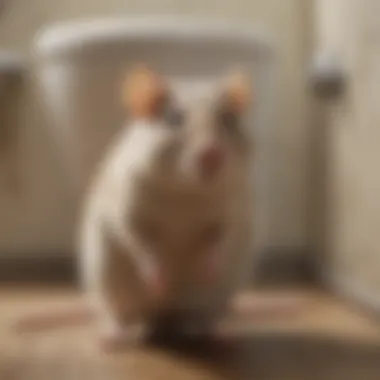

Homeowners often find themselves grappling with the unsettling presence of rats, especially when they invade spaces like the bathroom. Understanding preventative measures is crucial. These steps not only contribute to the physical integrity of a home but also to the well-being of its inhabitants. Implementing effective strategies can significantly reduce the likelihood of a rodent encounter in toilet bowls.
Plumbing Maintenance
Regular plumbing maintenance is a fundamental aspect of preventing rat infestations. Ensuring that all pipes and connections are secure and leak-proof can create barriers for these elusive creatures. Rat populations often flourish in environments with excess moisture and decay, which leaks can provide. Homeowners must prioritize the inspection of pipes, focusing on areas prone to cracks or corrosion. Consider adopting the following strategies for effective plumbing maintenance:
- Seal any gaps around pipes entering the home.
- Inspect the toilet seals to prevent any entry points.
- Repair leaky faucets and appliances to eliminate standing water.
By being vigilant and proactive, homeowners can prevent rats from finding even the slightest openings to enter their homes.
Environmental Controls
Environmental controls involve thoughtful management of both outdoor and indoor spaces. These strategies foster an environment that is less attractive to rodents while promoting sanitary conditions. Two critical aspects are outdoor waste management and yard maintenance.
Outdoor Waste Management
One significant contributor to rat infestations is poorly managed outdoor waste. Proper disposal of garbage is vital. When organic waste piles up in yards or around the property, it creates a smorgasbord for rats. Thus, investing in a sturdy trash bin with a tight-fitting lid is wise. Key characteristics include:
- Rodent-proof design that keeps food scraps contained.
- Easy access for proper disposal without attracting critters by leaving bins open.
Unique to outdoor waste management is its ability to serve a dual purpose: it not only keeps your yard looking tidy but also greatly reduces nesting sites for rats. However, poor management can lead to significant risks, such as disease transmission.
Yard Maintenance
Yard maintenance plays an equally crucial role in discouraging rodent occupancy. Keeping both the yard and surrounding areas tidy is paramount. This includes:
- Mowing the lawn regularly to avoid tall grass, which can provide hiding spots.
- Trimming bushes and trees, eliminating areas where rats might nest.
The unique feature of ongoing yard maintenance is its preventive nature; a well-kept yard minimizes both visual and physical access points for rodents. On the downside, neglecting yard care can welcome unwelcome visitors, making your home an inviting haven for rodents.
In summary, homeowners have a myriad of options to deter rats before they even think of entering through toilets. Through diligent plumbing maintenance and mindful environmental controls, the risk of a rat infestation can be significantly lessened, paving the way for a more tranquil living space.
The Role of Urban Environment
Urban environments play a crucial role in the phenomenon of rats infiltrating toilet bowls. The harmony of vast human activity presents numerous opportunities for rats, making them an unwelcome but common feature in many cities. This section emphasizes various elements crucial to understanding this unsettling reality, notably urbanization trends and public sanitation systems, both of which are essential in forming habitats that either encourage or deter rodent infestations.
Urbanization and Rodent Infestations
The swift pace of urbanization, with its bustling streets and ever-evolving infrastructure, has created fertile ground for rat populations. Living closely packed together often means reduced open spaces for natural predators of rats to thrive, allowing these pests to multiply unchecked. The upheaval of natural habitats and the introduction of waste through human activities—think food wrappers, discarded leftovers, and overflowing trash bins—provide sustenance and shelter for these creatures, causing their numbers to explode.
In cities, the proliferation of urban parks, tree lines, and construction sites further amplifies this issue. Disrupted soil and open construction sites are prime locations for rats to burrow and establish nests. It’s no wonder that sightings of these rodents are becoming more frequent, not just in alleyways and gardens but also in residential areas, perhaps even inside homes as they search for fresh water or food.
Notably, the ideal adaptability of Norway and Roof rats enables them to navigate these evolving landscapes effectively. Catching sight of a rat darting away at dusk or even midday might send shivers down the spine of unsuspecting residents, underscoring the urgency for better preventive measures.
"The cleanliness of urban spaces directly influences the rat population; poor waste management sets the stage for havoc."
Public Sanitation Systems
Public sanitation plays a pivotal role in either inviting or deterring rat infestations. A well-maintained sanitation system not only minimizes waste accumulation but also breaks the cycles of rodent survival. However, when a city's waste management falters—be it through inadequate garbage collection or inefficient sewer systems—rats can flourish.
An effective sanitation system is more than just emptied bins; it's a comprehensive approach that includes the design and maintenance of sewer systems. Routed sewage and stormwater systems, when poorly designed or maintained, often become rat highways. Look closely, and you might notice signs of rodent activity near drainage outlets and sewer grates, which serve as convenient access points to residential spaces.
Moreover, regular inspections and prompt repairs of infrastructure, like cracked pavements or broken grating, can minimize the available paths that rats exploit to invade homes. Constant vigilance and community involvement in discussing sanitation challenges help in reducing the risk of rodent infestations.
In summary, the urban environment's structural dynamics, the ongoing push for better urban sanitation, and collective home management strategies intertwine seamlessly to either facilitate or hinder rat infestations in toilet bowls. Recognizing this relationship allows homeowners to take proactive measures, reinforcing their domains against unwelcome visitors.
Case Studies of Infestations
Exploring the various case studies of rats in toilet bowls serves two pivotal purposes. Firstly, it reveals the real-world implications of such infestations on everyday life. These anecdotes not only paint a vivid picture of the problem but also raise awareness about preventative measures. Secondly, it enables us to learn from the experiences of others, understanding how differing environments contribute to the persistence of these rodents in residential and commercial settings.
Residential Incidents
Imagine waking up one fine morning only to find a rat peeking out from your toilet. This is more common than you might suppose. In many households, individuals have recounted their shock upon encountering rats in their toilets; one incident in a family home in Houston brought this issue to light. The family had been plagued by sewer problems for months. Eventually, a plumber discovered that the root of their troubles was a broken pipe connected to the sewer system, which allowed rats to travel through and make their way into the toilet.
The importance of sharing such stories cannot be overstated. They highlight the potential dangers, not just of the presence of the animals but also the health risks associated with them. Residents must remain vigilant about the integrity of their plumbing systems. Moreover, risks aren’t just limited to hygiene; the psychological impact of seeing a rat can lead to increased anxiety, especially for families with small children.
The growing number of residential encounter reports suggests a disturbing trend. Homeowners need to grasp the underlying causes that lead to these infestations. Regular maintenance checks can go a long way in mitigating risks, from monitoring for signs of wear in pipes to proper disposal of waste.
Commercial Encounters
Commercial properties often present a different battlefield in the face of rodent infestations. A notable case in a busy restaurant in New York City serves as an unsettling example. Staff noticed an unusual smell and took action. What they discovered was alarming: not just rat droppings, but also a rat emerging from the toilet in the kitchen area.
This type of incident brings to light the critical intersection of food safety and pest control. For businesses, the stakes are higher. A rodent sighting can lead to fines, loss of customers, and poor reputation. Furthermore, it raises questions about compliance with local health regulations, which are stringent in the culinary industry.
Such encounters necessitate a proactive approach. Establishing strong sanitation protocols and ensuring regular inspections helps create an environment less conducive to infestations. Business owners must recognize that a single infestation can lead to repercussions that extend beyond mere inconvenience.
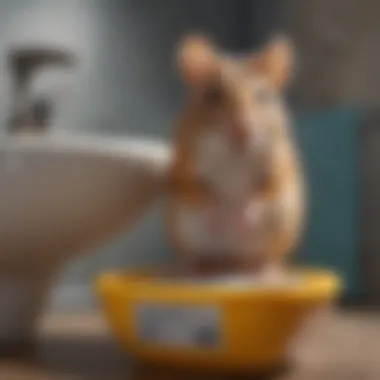
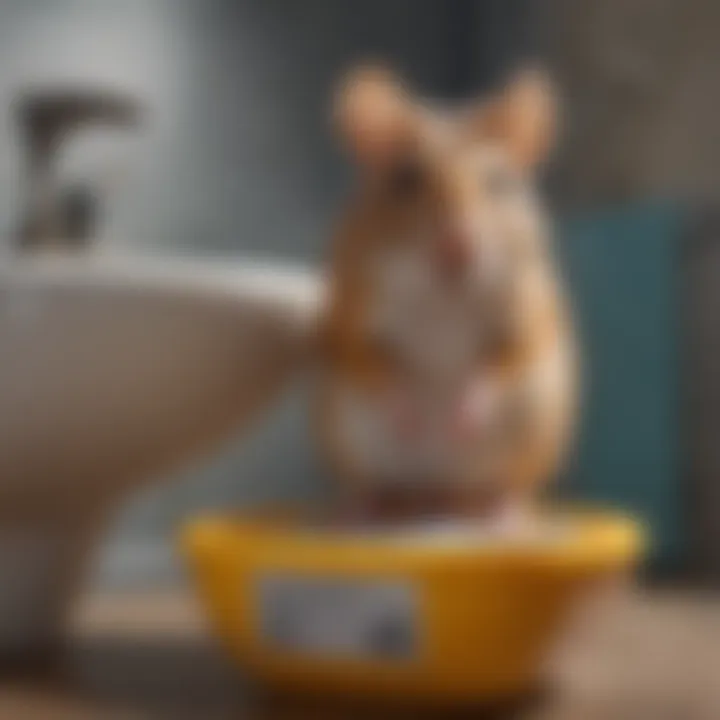
In summary, whether in residential or commercial settings, rodent infestations in toilet bowls represent a clear and present danger. These case studies encapsulate real-life experiences, offering insight into the preventive measures that can be adopted to protect both our homes and businesses. A proactive approach not only secures our physical spaces but also safeguards our mental well-being, ensuring peace of mind.
"An investment in maintenance is worth much more than the cost of repair later on."
Understanding these stories adds depth to our comprehension of infestation issues while weaving intricate connections between environmental concerns and individual responsibilities.
The Response: Relocation and Control Strategies
Addressing the unsettling presence of rats in toilet bowls requires a well-rounded approach that involves several strategies for relocation and control. It's not merely about eliminating the problem; it’s about understanding the nature of these creatures and adapting our living space accordingly. Being proactive can save much trouble down the line, and employing the right methods can lead to effective long-term solutions.
Humane Trapping Techniques
Humane trapping is often viewed as a first line of defense against rodent infestations. These traps are designed to catch rats without causing them harm, allowing for their relocation to a safer area. The design is simple yet effective, often using bait to lure the rat inside, where a mechanism closes the door without any injury.
Key benefits of humane trapping include the following:
- Lowest Impact: No need for toxic chemicals that can harm other wildlife or pets.
- Ethical Considerations: For many, it embodies humane values, steering clear of unnecessary suffering.
- Legal Compliance: In some areas, there may be laws prohibiting certain control methods, making humane traps a more compliant option.
However, one must consider a few factors:
- Location: Make sure to place traps where their presence is suspected, such as near entry points like plumbing systems.
- Baiting: Use popular bait like peanut butter or fruits, as rats are often drawn to these foods.
- Regular Check-ups: Traps should be checked frequently to minimize stress on the caught animals.
In addition, integrating natural deterrents around the house can complement trapping efforts. For instance, peppermint oil is known to repel rats. It’s ideal to saturate cotton balls with the oil and place them at potential entry spots.
Chemical Control Measures
While humane trapping is a prevalent approach, it may not always be practical in severe infestations. Here, chemical control measures often come into play. Rodenticides can be effective in reducing rat populations, but caution is paramount.
Here are some vital points to consider when employing chemical methods:
- Choose Wisely: Not all rodenticides are created equal. Some are anticoagulants, while others are neurotoxins. Understanding them is essential.
- Targeted Applications: Identify areas where rats frequent, such as near toilets, and apply bait strategically to minimize exposure to non-target species.
- Read Labels: Always abide by instructions given by the manufacturer and local regulations. Misuse can lead to unintentional harm or legal repercussions.
"Chemical control should always be the last resort, complementing rather than substituting humane measures."
Despite their efficacy, the downsides of using chemicals include:
- Health Risks: If not handled properly, there’s a chance of accidental exposure for household pets or children.
- Secondary Poisoning: Predators such as owls or hawks can consume poisoned rats, leading to further ecological issues.
In summary, controlling rat populations in toilets can be tackled through a multi-faceted strategy involving both humane trapping and careful chemical application. Both methods demand respect for the environment and understanding of local wildlife. Households must also consider the ethical implications, making it essential to adopt approaches that align with personal beliefs and community standards.
Legal Considerations
When it comes to dealing with rats, especially those entering our homes through toilets, understanding the legal landscape is crucial for homeowners. Regulations surrounding pest control not only often dictate how these creatures should be managed, but they also help foster a community where homeowners can feel secure and informed about their responsibilities and rights. Ensuring everyone is on the same page can make a significant difference when it comes to rat infestations.
Local Regulations on Rodent Control
Local municipalities usually have specific guidelines regarding rodent control. These rules are designed to protect public health while also regulating the actions that homeowners can take. Here are some important aspects to consider:
- Reporting Infestations: Many areas require residents to report significant infestations to local health departments, particularly if they pose a threat to public spaces. Reporting is not just about accountability; it strengthens community health measures.
- Use of Chemicals: Some districts enforce strict controls over the types of chemicals that can be used for rodent extermination. Homeowners must know these limits not to end up in sticky legal situations while attempting to handle a problem.
- Waste Disposal Protocols: Local regulations also influence how to handle waste disposal that could attract rats. The exact rules on how to dispose of garbage can be enforced to minimize rodent access.
Understanding these regulations equips homeowners not just to protect their homes, but also to contribute to the broader community wellbeing. It creates a coordinated effort to keep infestations at bay.
Homeowner Responsibilities
Homeowners carry certain obligations when it comes to addressing rat problems. Not only is it about making sure your home is rodent-free, but it also extends to being a good neighbor and community member.
- Maintaining Property: Owners are generally expected to keep their properties well-maintained. This includes securing openings that might allow rats entry, like unsealed vents or gaps in the foundation. Regular inspections can save stress in the long run.
- Prompt Action: When rat activity is discovered, it’s the homeowner's responsibility to act swiftly. This can mean hiring professionals or using legal methods to resolve the issue effectively and humanely. Delays can exacerbate problems, leading to ever more difficult legal and health implications.
- Educating Others: Homeowners can play a vital role in sharing knowledge about prevention strategies. Whether it’s through informal chats with neighbors or community meetings, spreading awareness not only fosters responsibility but builds a network of vigilance in an area.
Being proactive in understanding and adhering to local regulations not only helps homeowners manage their particular challenges but also reinforces community standards which can lead to collective solutions against rodent infestations.
Finale: Addressing the Rat Phenomenon
In examining the unsettling reality of rats finding their way into toilet bowls, it becomes clear that this issue is not just a nuisance but a serious concern for homeowners and the community at large. The phenomenon embodies various dimensions—from health risks associated with disease transmission to psychological impacts that gnaw at one's comfort. By understanding the biological characteristics and behavior of rats along with their entry points, individuals can equip themselves to tackle this problem more effectively.
Addressing this phenomenon demands a proactive approach focusing on prevention and increased awareness. Homeowners should be vigilant about the ways rats can infiltrate plumbing systems, using appropriate maintenance techniques to ward off these pests. Ensuring that sanitation practices are adhered to goes a long way in curbing the rodent population. Ultimately, the aim is not just to react to infestations but to foster an environment that is inhospitable for these creatures.
Recommendations for Future Research
Future research should delve deeper into the connection between urban environments and rat populations. Understanding how urbanization influences rodent behavior and reproduction could provide critical insights. This would involve:
- Studying Urban Planning: Investigating how different city layouts impact rodent movement and access to food sources.
- Behavioral Studies: Analyzing how environmental changes—such as garbage collection practices—affect rat behaviors.
- Biological Research: Focusing on the long-term health impacts of rat populations on public health measures.
- Community Engagement: Exploring how education on waste management and sanitation practices can mitigate infestations.
By pursuing these areas, researchers can contribute significantly to developing effective strategies for rodent control.
Final Thoughts on Prevention and Awareness
Raising awareness about the presence of rats in toilet bowls cannot be overstated. In the end, prevention is a shared responsibility. It requires collaboration between homeowners, local governments, and public health officials. Here are some strategies that can help foster a better understanding and proactive measures:
- Educational Campaigns: Implement community workshops focused on understanding rodent behaviors and their entry points.
- Regular Plumbing Inspections: Encourage homeowners to conduct routine checks on plumbing systems.
- Environmentally Friendly Practices: Promote sustainable disposal methods for food waste to minimize attractants.
"An ounce of prevention is worth a pound of cure." This adage rings true in the context of managing rodent populations. By being aware and taking preventive steps, homeowners can enjoy a more comfortable living space free from the threats posed by unwanted guests.



